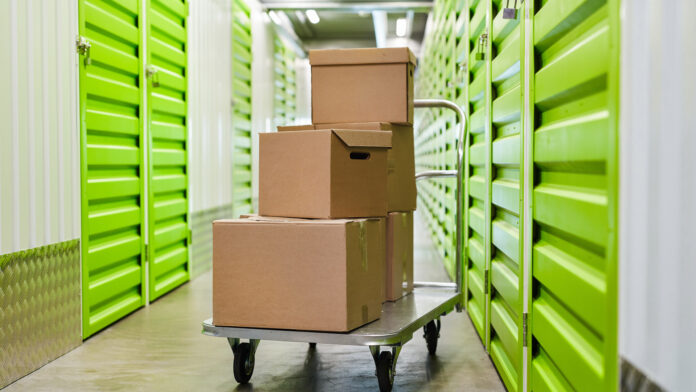Self-storage rents and occupancy rates are at record highs. Investors and entrepreneurs want in.
Monetizing Underutilized, Existing Space for Storage
According to the trade group Self Storage Association, there are roughly 55,00 self-storage facilities in the US operated by more than 30,000 owners. Though there are five publicly traded real estate investment trusts focusing on storage businesses, Timothy J. Dietz, president and chief executive of the Self-Storage Association, said, “…the industry remains largely made up of small-business owners.”
The self-storage industry averaged 3.5% annual growth pre-pandemic, according to Roger Morales, head of commercial real estate acquisitions for KKR. During the first half of 2020, there was a drop in growth BUT, since that time, the industry has roared back to life and then some.
READ: 2022 Top Agent Success Secrets [Revealed]: New FREE Real Estate Coaching Web Event, Revealing 17 Surprising Secrets Of The Top 100 $ Millionaire Agents. Get Your FREE Spot For The 2022 Real Estate Coaching Webinar Now. After You Have Attended This Event You Will Have A Huge Feeling Of Relief Knowing You Will FINALLY Laugh At Your Money Worries – You Will Have Your Own Personalized 2022 Step-By-Step Business Plan. Learn Now How To Generate 100’s of Motivated Leads for FREE, Without Coming Off As A Pushy Salesperson and Losing Your Soul. You Will Soon Know How To Become One of the 1000s of Agents Making HUGE Money Who Never Thought They Could. YES, I Want To Attend The FREE Webinar! <——Click To Register
P.S. Free Webinar, Limited Space. Less Than 300 Spots Still Available.
Rents & Occupancy Rates at Record Highs
Remote work has been a windfall for self-storage spaces. As remote workers repurposed their vacant bedrooms/closets into in-home offices, they needed a place to store their stuff. As many remote workers moved “back in” with their parents to ride out the pandemic, many of these younger workers and their families in turn needed off-site storage spaces for their respective stuff.
Voila…rents and occupancy rates at self-storage spaces exploded.
Strong Fundamentals
Residential customers are now using self-storage spaces to store their stuff as they used to use their in-home but now repurposed extra closets or bedrooms; commercial customers are using self-storage spaces for inventory or whatever else instead of expanding their offices.
Some customers pay rent on self-storage spaces for just a few months. Other customers are “sticky” or long-term users. Most, if not 95% of short- and long-term customers, don’t move even when storage space owners hike up rents an extra 10-15% on existing customers, according to Steve Sakwa, a research analyst with Evercore ISI Research. Self-storage “tenants” simply don’t want the hassles of finding another self-storage space, packing up their stuff, moving it to another space and then unpacking it again.
Operating Costs Comparatively Low to Other Real Estate Classes
Compared with student housing or hotels, operating costs such as taxes, electricity, water, maintenance, etc. are low. Sturdy, no-frills self-storage spaces require little, if any, renovations or repairs. Few on-site workers are required since smartphones enable customers to simply make reservations and payments online.
Likewise, record-high occupancy rates have essentially ended the need for advertising/marketing. Sakwa said, “Why advertise if you don’t have any (available) units?”
Investors and Entrepreneurs Pouring into Self-Storage Market
Storage-industry tech is attracting droves of investors and entrepreneurs into this real estate sector. Even facilities that have been vacant and/or dormant for some time are seeing immediate and/or increasing steady income with minimal bells and whistles necessary.
Growth is mostly in “general” self-storage but storage demand for “extras” such as recreational vehicles, boats, appliances, whatever, is also strong.
Likewise, some entrepreneurs are looking at their own homes and/or offices as underutilized urban spaces to repurpose as self-storage spaces.
Neighbor.com, think Airbnb for self-storage, is a peer-to-peer platform where homeowners can rent out extra space in their homes and/or commercial landlords can lease unused square footage (vacant retail spaces, vacant parking lots, etc.) as self-storage “units.”
Dan Wenhold, a venture capitalist who specializes in real estate with the VC firm Fifth Wall, believes such business-to-business and consumer-to-consumer partnerships could become “massive” drivers of growth in this now burgeoning self-storage real estate sector.
Thanks to the Self-Storage Association and The New York Times.
https://www.neighbor.com/self-storage
























